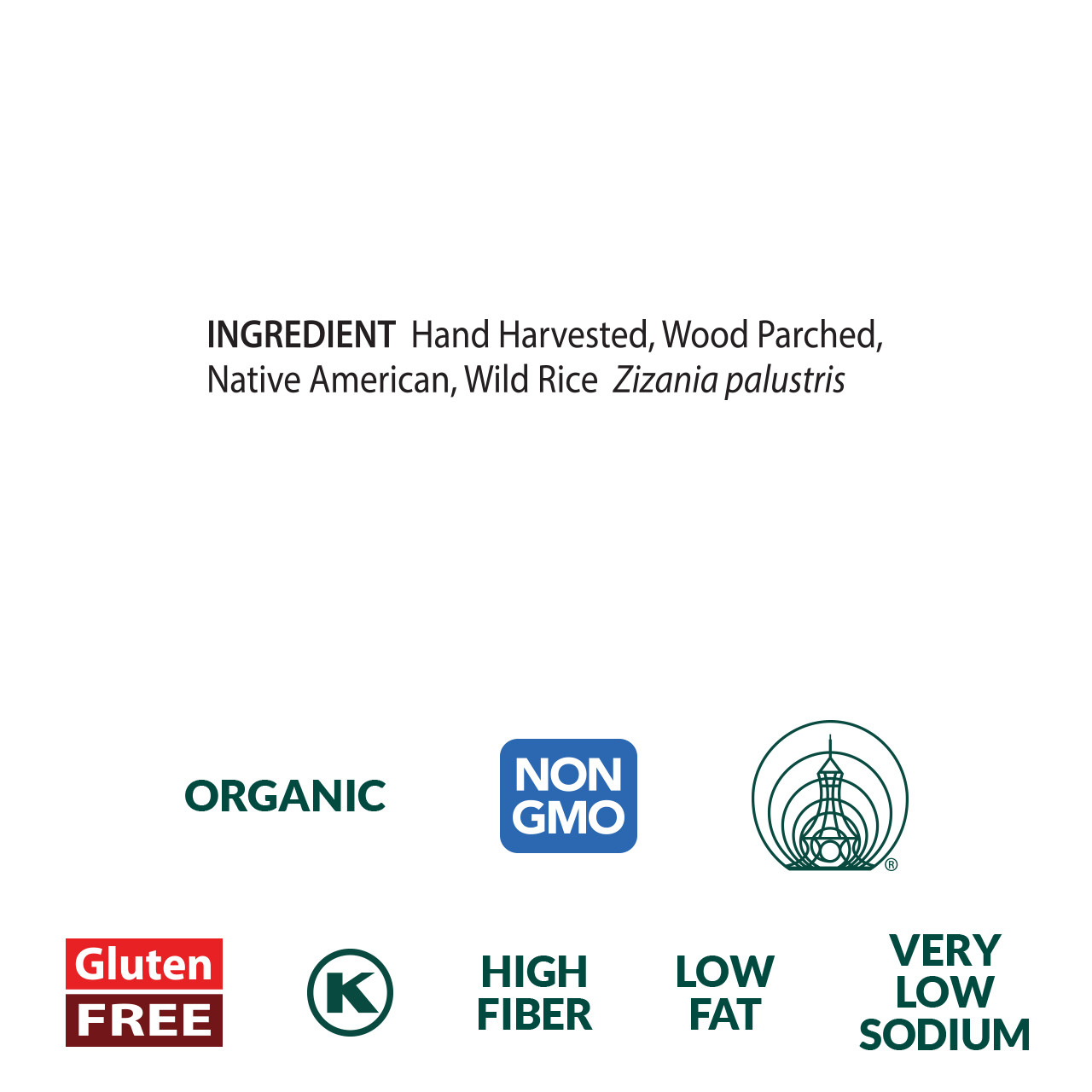Hand harvested by Native Americans in canoes as required by law, wood fire parched, authentically delicious whole grain. Quick cooking and fluffy, not hard like paddy grown black hybrid varieties. Eden Wild Rice was Vegetarian Times 2009 'Best Go-To Grain'. Rich in niacin B3 and manganese. A good source of fiber, protein, thiamin B1, riboflavin B2, magnesium, and zinc. Gluten free. kosher pareve
MORE DETAILS
Eden Wild Rice is hand harvested in canoes from northern Minnesota lakes by the Leech Lake band of Ojibwe. State laws distinguish authentic wild rice as Native harvested using the non-mechanized methods that have been passed on for over a thousand years. Eden Wild Rice supports traditional culture and helps preserve this ancient harvest. It provides true wild rice experience and benefit in its light, sweet, and fluffy cooked form.
Eden Wild Rice Zizania palutris is authentic wild rice, strikingly different from paddy grown 'wild rice'. Hybrid paddy grown 'wild rice' is usually black, very hard, and takes much longer to cook while still having tough texture. Most items labeled wild rice are paddy grown in California and not subject to laws that distinguish authentic wild rice grown in Minnesota. When people experience real Wild Rice, like Eden's, they are usually amazed that it is so soft and sweetly delicious.
Eden Wild Rice is harvested from the end of August through early September, the time the Ojibwe call the 'rice harvest moon' or 'Manoominike Giizis.' Early in the day ricers set out in canoes to hand harvest the ripened grains. There are two people per canoe, a poler who stands in the back, and a knocker who sits in the middle. The poler guides the canoe through stands of rice using a forked pole about 20 feet long. Rice beds are too dense to paddle through. The knocker uses two cedar wood sticks resembling large drumsticks to harvest the rice. Alternating between left and right hands, he uses one stick to pull the rice stalk over the canoe and the other to tap the rice loose from the stalk into the canoe. Unripe grains stay on the stalk. Some falls off and re-seeds the lake, and some will be harvested another day. When full the canoe returns to shore and the rice is winnowed removing its chaff and then parched in a wood fired roaster to dry and protect it while imparting flavor notes.
History
The only indigenous North American grain, wild rice is an annual aquatic reed grass that grows to 12 feet with a 2 foot flowering panicle. Poaceae (Gramineae) or grain family, not a true rice of the Oryza genus. Used like any other grain, it is gluten free and embraced by those with sensitivity to modern wheat or other grains containing gluten.
According to Ojibwe history, they were told by the Creator to move westward from their home in the east or perish. They were told to go to the land where food grows upon the water. Upon reaching this place their migration would stop. They found this food growing upon the water and named it manoomin or 'good berry.' Much later European settlers would call it wild rice.
There are thousands of different wild rice varieties, each growing in different lakes. Water characteristics, temperature, depth, and mud composition creates the variety. Authentic wild rice is now in danger of contamination from hybrid strains that are grown close to natural stands or that have been shipped in green from other states to be processed in Minnesota. Wild rice is also in danger of contamination from future genetic modification. A bill signed into law by Congress in May 2007 requires disclosure and environmental impact statements from any company that may attempt to create genetically engineered wild rice. While this is a step in the right direction the bill fell short of an outright ban and genetic contamination of wild rice remains a disconcerting threat.
In addition to being a sacred component of Native American culture and tradition, wild rice is vital to the lakes' ecology. Rice stands provide habitat for waterfowl, fish, and other species that rely on it for food and as nesting areas and haven.
Nutrition Facts
According to FDA "Diets rich in whole grain and other plant foods and low in total fat, saturated fat, and cholesterol may reduce the risk of heart disease and some cancers." Also, "Low fat diets rich in fiber-containing grain, fruits, and vegetables may reduce the risk of some types of cancer, a disease associated with many factors." Eden Wild Rice is low fat, contains no saturated fat or cholesterol, and is a good source of fiber. It is very low sodium, an excellent source of niacin B3 and manganese, and a good source of protein, thiamin B1, riboflavin B2, magnesium, and zinc. Gluten free.
Eden Wild Rice is delicious, light and fluffy whole grain. It is perfect for holidays meals and year round as a grain dish, in soups, stews, salads, grain burgers, desserts, pancakes, waffles, and bread making. It is delicious combined and cooked with other grains. Mix it with vegetables, nuts, seeds, and dried fruit for stuffing or wild rice pilaf. Cook and use leftovers during the week to make any of these dishes, as it stores well without loosing its flavor when refrigerated.



















